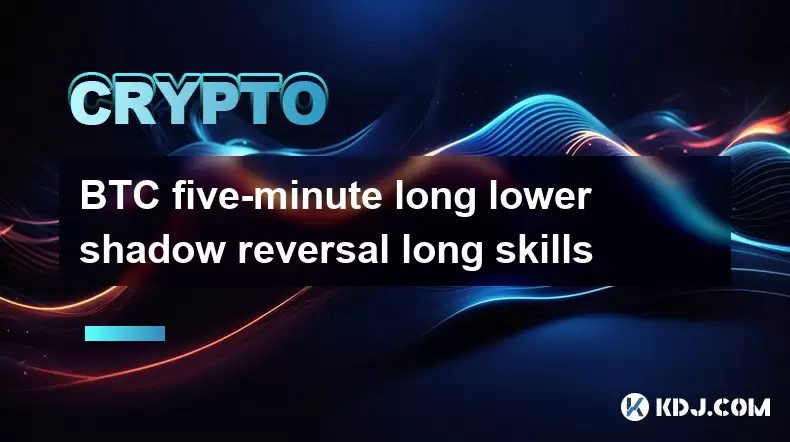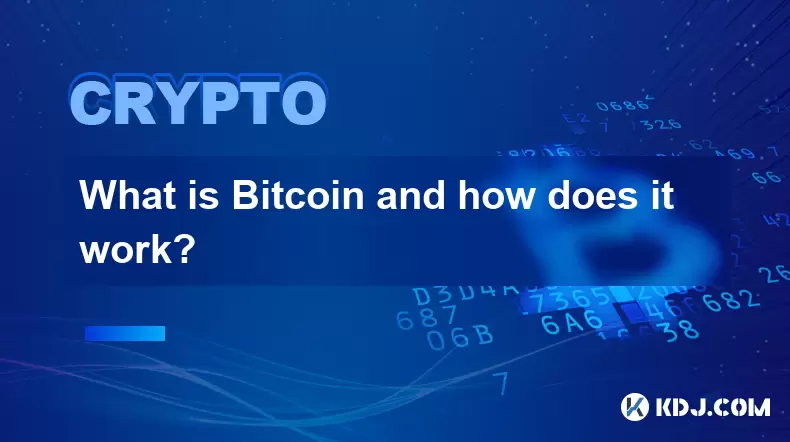-
 Bitcoin
Bitcoin $115100
1.27% -
 Ethereum
Ethereum $3675
2.71% -
 XRP
XRP $2.995
1.45% -
 Tether USDt
Tether USDt $1.000
0.02% -
 BNB
BNB $769.8
2.64% -
 Solana
Solana $168.0
3.25% -
 USDC
USDC $0.9999
-0.01% -
 TRON
TRON $0.3371
1.48% -
 Dogecoin
Dogecoin $0.2051
3.36% -
 Cardano
Cardano $0.7394
2.30% -
 Hyperliquid
Hyperliquid $38.15
0.42% -
 Stellar
Stellar $0.3966
-0.36% -
 Sui
Sui $3.486
2.93% -
 Chainlink
Chainlink $16.72
2.52% -
 Bitcoin Cash
Bitcoin Cash $568.0
4.36% -
 Hedera
Hedera $0.2440
2.59% -
 Ethena USDe
Ethena USDe $1.001
0.04% -
 Avalanche
Avalanche $22.16
2.06% -
 Litecoin
Litecoin $119.1
-0.73% -
 UNUS SED LEO
UNUS SED LEO $8.991
0.04% -
 Toncoin
Toncoin $3.232
-0.39% -
 Shiba Inu
Shiba Inu $0.00001233
2.82% -
 Uniswap
Uniswap $9.717
2.53% -
 Polkadot
Polkadot $3.664
1.85% -
 Dai
Dai $1.000
0.01% -
 Monero
Monero $281.2
-3.89% -
 Bitget Token
Bitget Token $4.350
1.55% -
 Cronos
Cronos $0.1428
5.07% -
 Pepe
Pepe $0.00001050
3.68% -
 Aave
Aave $262.3
3.54%
BTC five-minute long lower shadow reversal long skills
The BTC five-minute long lower shadow reversal pattern helps traders identify bullish entry points on candlestick charts, enhancing short-term trading strategies.
Jun 06, 2025 at 07:29 pm

Introduction to BTC Five-Minute Long Lower Shadow Reversal
The BTC five-minute long lower shadow reversal is a technical analysis pattern that traders use to identify potential entry points for long positions in the cryptocurrency market. This pattern occurs on a five-minute candlestick chart and is characterized by a long lower shadow, which indicates a significant rejection of lower prices and a potential bullish reversal. Understanding this pattern can help traders capitalize on short-term price movements and improve their overall trading strategy.
Identifying the Long Lower Shadow Reversal Pattern
To effectively identify the BTC five-minute long lower shadow reversal, traders need to pay close attention to the candlestick's structure. A long lower shadow indicates that the price has fallen significantly during the five-minute period but has been pushed back up by the end of the period. Here are the key characteristics to look for:
- The lower shadow should be at least twice the length of the body of the candlestick.
- The candlestick should close near the high of the period, indicating strong buying pressure.
- The pattern is more significant if it occurs at a support level or after a downtrend.
By recognizing these elements, traders can confidently spot potential reversal points and prepare for a long position.
Entry and Exit Strategies for Long Positions
Once the BTC five-minute long lower shadow reversal pattern is identified, traders need to establish clear entry and exit strategies to maximize their potential gains and minimize risks. Here are some steps to consider:
- Entry Point: Enter a long position at the opening of the next candlestick following the reversal pattern. This allows traders to capitalize on the momentum of the bullish reversal.
- Stop Loss: Set a stop loss just below the low of the reversal candlestick to limit potential losses if the price continues to decline.
- Take Profit: Determine a take profit level based on previous resistance levels or by using a risk-reward ratio of at least 1:2.
Implementing these strategies can help traders manage their trades effectively and increase their chances of success.
Risk Management and Position Sizing
Effective risk management is crucial when trading the BTC five-minute long lower shadow reversal pattern. Traders should consider the following risk management techniques:
- Position Sizing: Determine the size of the position based on the trader's risk tolerance and account size. A common rule of thumb is to risk no more than 1-2% of the trading capital on a single trade.
- Diversification: Avoid putting all capital into a single trade. Diversify across different assets and strategies to spread risk.
- Continuous Monitoring: Keep an eye on the market and be prepared to adjust stop loss and take profit levels as the trade progresses.
By adhering to these risk management principles, traders can protect their capital and maintain a sustainable trading approach.
Technical Indicators to Confirm the Reversal
To increase the reliability of the BTC five-minute long lower shadow reversal pattern, traders can use additional technical indicators to confirm the bullish reversal. Some useful indicators include:
- Relative Strength Index (RSI): Look for the RSI to be in oversold territory (below 30) before the reversal pattern forms, indicating a potential bounce back.
- Moving Averages: Use a short-term moving average (e.g., 20-period) and a longer-term moving average (e.g., 50-period). A bullish crossover of the short-term moving average above the longer-term moving average can confirm the reversal.
- Volume: Confirm the reversal with an increase in trading volume, which indicates strong buying interest.
Incorporating these indicators into the trading strategy can provide additional confirmation and enhance the trader's confidence in the long position.
Practical Example of Trading the Pattern
To illustrate how to trade the BTC five-minute long lower shadow reversal pattern, let's consider a practical example:
- Scenario: The BTC/USD five-minute chart shows a downtrend, and a candlestick with a long lower shadow forms at a known support level.
- Entry: The next candlestick opens at $40,000. Enter a long position at this price.
- Stop Loss: Set the stop loss at $39,500, just below the low of the reversal candlestick.
- Take Profit: Identify a resistance level at $41,000 and set the take profit there, offering a potential reward of $1,000 for a risk of $500 (2:1 risk-reward ratio).
In this example, the trader enters the position at the opening of the next candlestick, manages risk with a stop loss, and targets a profit based on a known resistance level. This approach demonstrates how to apply the pattern in real-world trading scenarios.
Frequently Asked Questions
Q1: Can the BTC five-minute long lower shadow reversal pattern be used on other cryptocurrencies?
A1: Yes, the pattern can be applied to other cryptocurrencies, but traders should consider the liquidity and volatility of the specific asset. The pattern may be more reliable on major cryptocurrencies like Ethereum (ETH) and Binance Coin (BNB) due to higher trading volumes.
Q2: How often does the BTC five-minute long lower shadow reversal pattern occur?
A2: The frequency of the pattern depends on market conditions. During periods of high volatility, the pattern may appear more frequently. Traders should monitor the market closely and be ready to act when the pattern emerges.
Q3: Is the BTC five-minute long lower shadow reversal pattern suitable for beginners?
A3: While the pattern is relatively straightforward, beginners should practice using demo accounts before trading with real money. Understanding the nuances of the pattern and integrating it into a broader trading strategy takes time and experience.
Q4: Can the BTC five-minute long lower shadow reversal pattern be used in conjunction with other trading strategies?
A4: Yes, the pattern can be combined with other strategies, such as trend following or breakout trading. Using multiple strategies can help traders validate their entry and exit points and improve their overall trading performance.
Disclaimer:info@kdj.com
The information provided is not trading advice. kdj.com does not assume any responsibility for any investments made based on the information provided in this article. Cryptocurrencies are highly volatile and it is highly recommended that you invest with caution after thorough research!
If you believe that the content used on this website infringes your copyright, please contact us immediately (info@kdj.com) and we will delete it promptly.
- Avalanche vs. Ruvi AI: Daily Sales Tell a Story of Crypto Disruption
- 2025-08-07 06:29:35
- DeSoc: The Crypto to Buy Now for a Decentralized Future (and Maybe 43x Gains!)
- 2025-08-07 06:50:16
- Meme Coins in August 2025: Riding the Rally Wave
- 2025-08-07 06:56:08
- Big Whales, Altcoins, and Heavy Transactions: What's Moving the Crypto Market?
- 2025-08-07 06:29:35
- TRX, RUVI, and CoinMarketCap: What's Buzzing in the Crypto Sphere?
- 2025-08-07 05:31:17
- Cryptos Primed for 5x Gains? Ozak AI Spotlights Hot Projects
- 2025-08-07 05:41:42
Related knowledge

Do you need to understand technology to use Bitcoin?
Aug 07,2025 at 06:17am
Understanding the Basics of BitcoinTo engage with Bitcoin, one does not need a deep understanding of the underlying technology, much like how individu...

Can your Bitcoins be stolen?
Aug 07,2025 at 03:28am
Understanding the Security of Bitcoin OwnershipThe decentralized nature of Bitcoin means that no central authority controls the network, placing the r...

How does Bitcoin compare to gold?
Aug 07,2025 at 03:18am
Historical Context and Origins of Bitcoin and GoldUnderstanding the comparison between Bitcoin and gold begins with their origins and historical roles...

Can you lose money with Bitcoin?
Aug 07,2025 at 07:49am
Understanding the Volatility of BitcoinBitcoin is known for its extreme price volatility, which is one of the primary reasons investors can lose money...

How does Bitcoin function as a digital currency?
Aug 07,2025 at 02:50am
Understanding Bitcoin as a Digital CurrencyBitcoin operates as a decentralized digital currency, meaning it functions without a central authority such...

What is Bitcoin and how does it work?
Aug 07,2025 at 03:42am
What is Bitcoin?Bitcoin is a decentralized digital currency that operates without the need for a central authority or intermediary. Created in 2009 by...

Do you need to understand technology to use Bitcoin?
Aug 07,2025 at 06:17am
Understanding the Basics of BitcoinTo engage with Bitcoin, one does not need a deep understanding of the underlying technology, much like how individu...

Can your Bitcoins be stolen?
Aug 07,2025 at 03:28am
Understanding the Security of Bitcoin OwnershipThe decentralized nature of Bitcoin means that no central authority controls the network, placing the r...

How does Bitcoin compare to gold?
Aug 07,2025 at 03:18am
Historical Context and Origins of Bitcoin and GoldUnderstanding the comparison between Bitcoin and gold begins with their origins and historical roles...

Can you lose money with Bitcoin?
Aug 07,2025 at 07:49am
Understanding the Volatility of BitcoinBitcoin is known for its extreme price volatility, which is one of the primary reasons investors can lose money...

How does Bitcoin function as a digital currency?
Aug 07,2025 at 02:50am
Understanding Bitcoin as a Digital CurrencyBitcoin operates as a decentralized digital currency, meaning it functions without a central authority such...

What is Bitcoin and how does it work?
Aug 07,2025 at 03:42am
What is Bitcoin?Bitcoin is a decentralized digital currency that operates without the need for a central authority or intermediary. Created in 2009 by...
See all articles

























































































